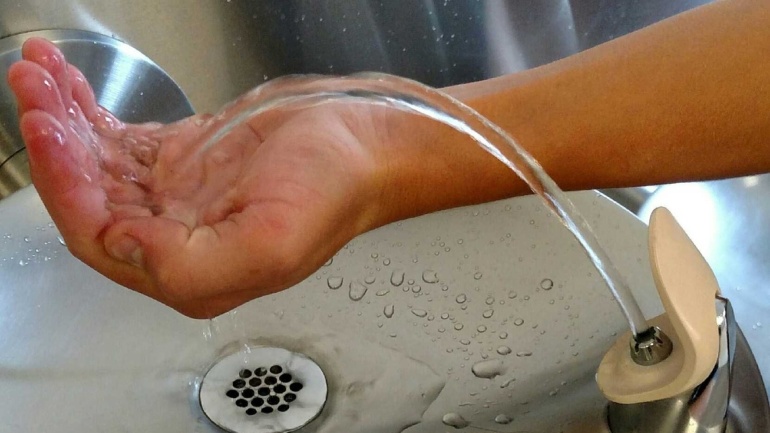By Taylor Schaefer, Writing Project Leader for Save The Water™ | June 21, 2015
When the Toxic Substance Control Act (TSCA) passed in 1976, hopes for safer use of chemicals from manufacturers were set into motion. However, an outdated law combined with already instilled weaknesses has left the Environmental Protection Agency (EPA) unable to fully evaluate health risks or test potentially harmful chemicals.(3) An estimated 80,000 chemicals are available for commercial use in the United States and the Environmental Protection Agency (EPA) has only been able to restrict the use of less than 10.(2) It is clear that potentially harmful substances are able to slip through the broken legislation. However, passing a new law that can please everyone will not be an easy task. A mix of issues from all parties involved creates a severe challenge in reforming the TSCA.
A plethora of bipartisan legislation has been presented to congress. One of the more notable is the “Frank R. Lautenberg Chemical Safety for the 21st Century Act.” This legislation would require the EPA to review and approve about 1,000 new chemicals that come on the market each year and prevent industry from hiding information on chemicals to the public. (6) The bill currently has the support of congressmen from both parties, representing 25 states. (6) However, the recent bills presented from congressmen such as Tom Udall, David Vitter, John Shimkus, Barbara Boxer and Edward Markey do not come without criticisms. (5) Time seems to be the common theme crippling the effectiveness of the presented legislation. The lengthy process of testing chemicals obstructs the adoption of new innovative products and a lack of clarity prevents the EPA from taking action on chemicals. (1) While there is a mutual acknowledgement by the government, the EPA and the industry to reform the TSCA, the current legislation and the uncertainty about the safety of products creates legal issues for manufacturers, a public health concern for customers and makes it difficult to evaluate alternatives. The fact that the new legislation must solve public health concerns caused by toxic substances as well as make a profit for the industry ensures a difficult process for all sides.
As for the potentially harmful substances seeping through the cracks of the TSCA, those are often referred to as Contaminants of Emerging Concern (CEC). CECs consist of new or old substances introduced to the environment that have the potential to cause harm to ecosystems as well as human health. (4) Some of these substances include pharmaceuticals, personal care items, pesticides and plastics. More recent advances in research and technology will allow Save The Water™ to fill the hole left by the EPA. By performing evaluations of CECs, a greater amount of knowledge on potentially harmful chemicals will be made available to the public. Save The Water’s research and educational material in return will put pressure on manufacturers to produce products free of chemicals that are dangerous to human health.
Since CECs are found in many products used in our daily routine there is a continuous release of chemicals into the environment that can accumulate over time (4). The difficulty of identifying what substances are harmful and what substances are not is one of the same problems disrupting the reformation of the TSCA. A comprehensive understanding of the source of emerging contaminants is necessary in evaluating the extent of harm these substances are causing. Due to the extensive amount of sources that exist and the continuous release of chemicals into the environment, determining a strategy of reduction and regulation will prove to be a challenge. Continued, expedited research done by Save The Water™ will provide early warnings of potential threats and a better understanding of harmful exposure.
Sources:
- Brodwin, David. 6 April 2015. “Let the EPA Be a Real Referee.” U.S News and World Report. https://sensiblesafeguards.org/let-the-epa-be-a-real-referee/
- Kollipara, Puneet. 20 June 2015. “Reform of Toxic Law is Contentious.” Science Magazine.https://login.ezproxy.net.ucf.edu/login?qurl=http://www.sciencemag.org%2fcontent%2f347%2f6229%2f1403.2.full.pdf?sid=24d99ec0-21d8-48ab-95c3-796b785a8d45
- Natural Resources Defense Council. 2015. “Take Out Toxic.” http://www.nrdc.org/health/toxics.asp
- Raghav, M; Eden, S; Mitchell, K; Witte, B.” The Arroyo 2013.” Water Resources Research Center College of Agriculture and Life Sciences, University of Arizona. https://wrrc.arizona.edu/sites/wrrc.arizona.edu/files/Arroyo2013LR_0.pdf
- Szal, Andy. 16 April 2015. “EPA Official Takes Issue With Chemical Reform.” Manufacturing.net. Bill.”http://www.manufacturing.net/news/2015/04/epa-official-takes-issue-with-chemical-reform-bill
- Tom Udall, Senator for New Mexico. April 2015. “Chemical Safety.” Senate.gov .https://www.tomudall.senate.gov/issues/chemical-safety
- United States Environmental Protection Agency. 9 March 2015. “Summary of the Toxic Substances Control Act.” https://www.epa.gov/laws-regulations/summary-toxic-substances-control-act





